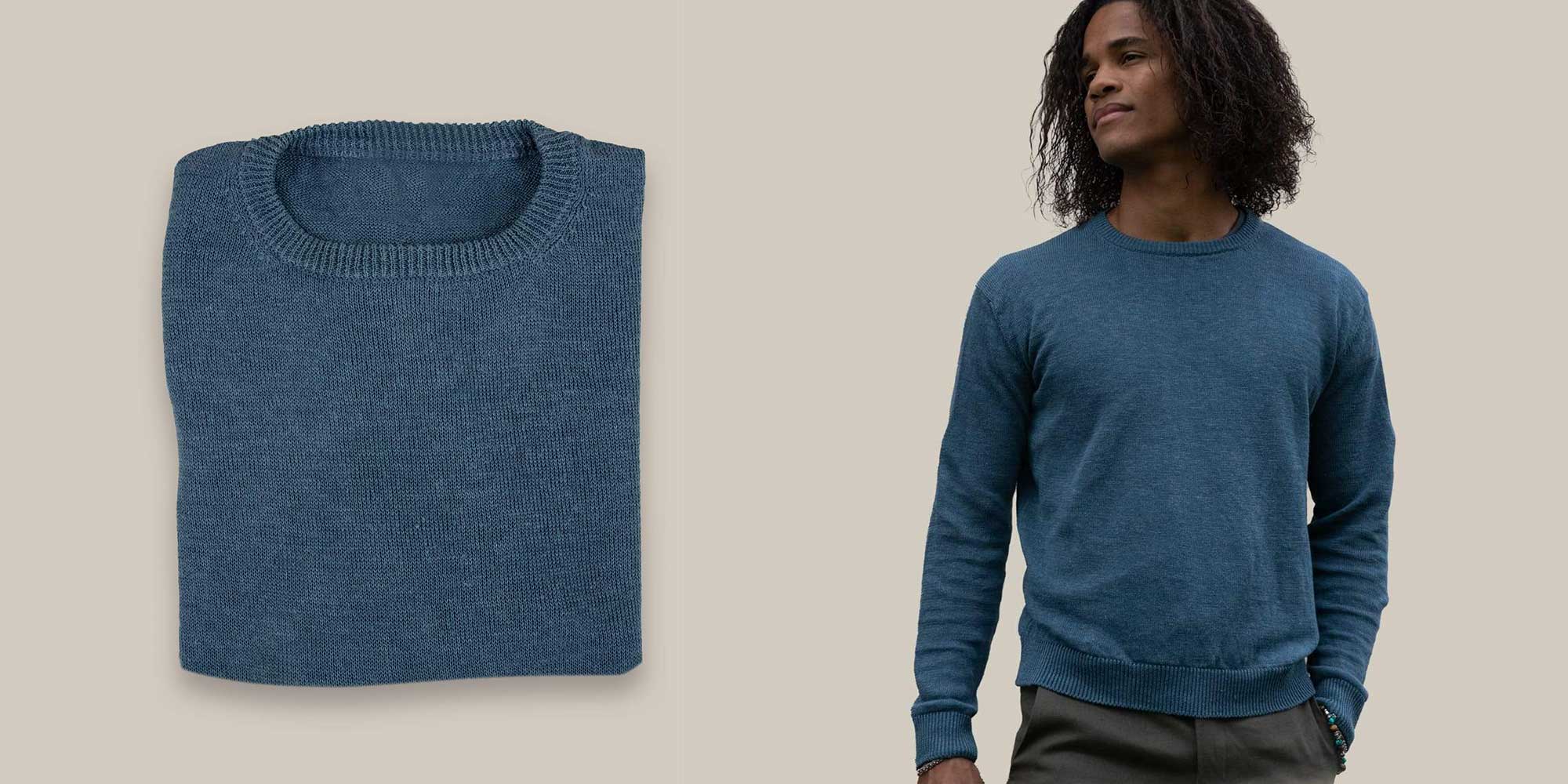Our editors curate highly rated brands that are first assessed by our rigorous ratings system. Buying through our links may earn us a commission—supporting the work we do. Learn more.
Hemp fabric has undergone an image transformation in recent years, as shoppers and brands alike are learning of its versatility, strength, and potential sustainability.
Hemp on the high ground
Hemp is the sober cousin of marijuana, and industrial hemp contains only a tiny amount of the psychoactive component of cannabis, so the only high you’ll get from hemp fabric is the moral high-ground you’ll stand on knowing you’re wearing a more sustainable fabric.
In fact, industrial hemp is the fashion equivalent of the boring sibling who wants to stay home every weekend and knit socks for fun. But despite its boring properties, hemp’s association with cannabis has copped it a bad rep over the years.
It also doesn’t help that hemp clothing has been historically associated with baggy grunge-style clothing in khaki hues. Not that there’s anything wrong with hippy clothing if that’s the goal, but the trend certainly hasn’t done much to improve hemp’s image among the general populace.
But hemp has started to redeem its image in recent years, and its potential is undeniable. The environmental benefits of hemp cultivation, combined with its durable characteristics as a fabric, mean it can feature in clothing that both feels and looks great, by even the highest of standards.
So what is hemp?
Hemp has a very long history of being used as a fibre. In fact, it has been cultivated for thousands of years and on almost every continent. It has been used in clothing, ropes, and sails. Rumour has it that the word “canvas” is derived from “cannabis”.
Hemp is a type of bast fibre which means it’s one of a number of plant-based fibres derived from the stems of plants such as flax (where linen comes from), jute, and stinging nettle. The fabric has various natural advantages such as keeping you warm in winter, cool in summer, and even protecting you from UV rays.
The fibre produced from pure hemp is similar to linen in texture. It can also be blended with other plant-based fibres to create fabrics with the durability of hemp and the softness of cotton or bamboo. Extremely versatile, materials produced from hemp fibres can be used for a variety of fabrics, “from jersey to denim to hessian to canvas”, according to Textile Exchange.
But why all the fuss about the little green leaf? Is it really any different to its alternatives?
What makes hemp fabric a more sustainable option?
It’s no coincidence that hemp bears the nickname weed. A densely and quickly growing plant, hemp literally chokes out any competing plants. This means harsh chemical herbicides aren’t necessary. Hemp also naturally reduces pests, so no pesticides are usually needed. Amazingly, it also returns 60-70% of the nutrients it takes from the soil. As Textile Exchange points out, since hemp plants have deep root systems, soil quality is replenished, which in turn captures carbon from the atmosphere.
Not only is hemp gentle on the earth, it also requires very little water, especially when compared to cotton, which, according to Slate uses “about 50% more water per season than hemp.” But that’s not all. According to the same article, “when you add processing into the equation, cotton uses more than four times as much water as hemp.”
Hemp also requires a relatively small amount of land to cultivate. According to the Guide to Sustainable Textiles, this means it can produce up to double the fibre yield per hectare than cotton. It also makes a great addition to crop rotations throughout the year for farmers.
However, it’s important to be aware that hemp does not always mean organic, and many farmers still use environmentally damaging fertiliser. When going for hemp, make sure it’s organic and thoroughly study the brand you’re considering buying from.
So from an environmental perspective, the benefits of hemp are pretty clear. But how does it compare once we start processing the raw product into a fabric?
How is hemp turned into a fabric?
Hemp fabric is made from the long strands of fibre that make up the stalk of the plant. These fibres are separated from the bark through a process called “retting.” These fibres are then spun together to produce a continuous thread that can be woven into a fabric. The processing methods for hemp were originally developed in the early 1900s, and are only now being updated and expanded to meet rising demand.
The various stages of the process can be done organically through a mechanical process that requires no chemicals. However, many companies now produce hemp fabric chemically, in a process that is much more intensive on the environment, but faster and cheaper to create. Often you can tell that a hemp fabric has gone through this intensive process if it is labelled as “hemp viscose”, which normally involves the same harmful processing with toxic chemicals as regular viscose. Some companies may use the less impactful lyocell process, so it is worth double checking before purchasing something made of hemp.
Cost of production is another factor to consider, says Textile Exchange. Since hemp is bulky, transporting it to processing centres can be “expensive and energy-intensive”. Shorter, localised supply chains are one possible solution here.
The impact of the fabric doesn’t just stop once it has been woven, either. Once the fabric has been created, it may be dyed, which again can result in various environmental outcomes, depending on the technique used.
So the production phase is a bit less clear-cut. Although hemp is a more eco-friendly crop to grow, we still need to be sure that the process being used to turn the plant into a fabric is lower-impact. Producers have a responsibility to ensure their manufacturing process considers the environment, workers, and consumers, along with profitability.
So, what’s the verdict?
The good news is that hemp generally constitutes a more sustainable, lower-impact crop that can be converted into fabric responsibly. It’s important to make sure, however, that companies are not just greenwashing their hemp. Wondering where to start looking?
Check out these brands using hemp, rated “Good” or “Great” in the Good On You directory:



























